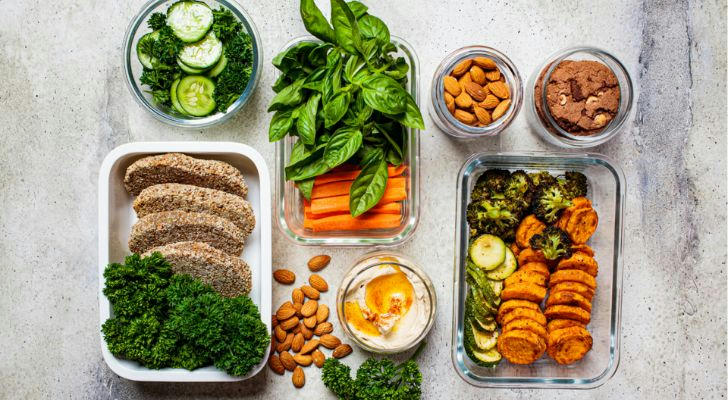Eight healthy tips to help you say goodbye to the weight burden!
When it comes to healthy weight loss, it's important to choose the method that's right for you. Here are eight popular weight loss methods, each with unique benefits and effects. Act quickly and achieve your healthy weight loss goals!
1. Easy and simple: the six-meal plan
It's lunch time, are you feeling hungry? Or did you eat too much at dinner because you waited too long? Don't worry, the six-meal plan may be your answer! By eating small meals throughout the day and reducing the amount of sugar intake at each meal, you can avoid the rapid rise and fall of blood sugar levels, curb overeating and hunger, and help you lose weight.

A study of more than 2,300 people found that people who ate six meals a day consumed fewer calories overall and had a lower BMI than those who only ate three meals. So why not give it a try? Start with a small snack between meals - like an apple or a handful of nuts - and see how it changes the way you eat.
2. Eat vegetables first: simple tips
Here's a little secret: the order in which you eat can make a big difference! Generally, vegetables are eaten first, followed by meat and fish, and finally rice. This is the order that is important. The fiber in vegetables helps slow down the absorption of sugar and keep blood sugar levels stable. The same food can prevent weight gain by changing the order, which has also attracted people's attention from the perspective of anti-aging.

Want to enhance the effect of this method? If you like raw food, eat raw vegetables and fruits first, and eat other things 20 to 30 minutes later, which is healthier.
3. Eight-hour weight loss: time-restricted eating
Another effective way to lose weight is to limit your daily eating time to 8 hours. For example, if you start eating at 10 am, then be sure to eat your last meal before 6 pm. This means that you will have a 16-hour fasting period every day, which helps boost metabolism and support weight loss. For best results, try to eat at the same time every day and avoid overeating. Many people find that this method not only helps control weight, but also improves overall energy levels. In addition, time-restricted eating can improve blood sugar levels and reduce inflammation.
4.Casein-free: Give up dairy products

If you are sensitive to dairy products, switching to a casein-free diet may help. This means avoiding products containing milk, cream, whey, and casein, and opting for plant-based alternatives such as soy milk, almond milk, or coconut milk. You can use coconut milk in baking recipes or soy milk in your breakfast oatmeal.
5. Gluten-free: Avoid wheat products
A gluten-free diet requires avoiding foods containing wheat, barley, and rye, which means many common breads, pastas, and snacks are on the forbidden list. Choosing gluten-free foods not only helps those with gluten sensitivity reduce symptoms, but also improves digestive health.
6. Low FODMAP: Relieve digestive problems

A low FODMAP diet helps relieve problems such as bloating and stomach pain by reducing hard-to-digest sugars. These sugars are found in foods such as wheat, beans, and certain fruits. This diet, developed by Monash University in Australia, can help you figure out which foods may be causing discomfort.
If you are going to try this diet, start by avoiding high FODMAP foods for three weeks. After that, slowly reintroduce them one by one to see which foods may upset your stomach.
7. Eight glasses of water: can be healthier

Drinking about 8 glasses (2 liters) of water a day is essential to keep your body functioning properly. This not only helps keep your body hydrated, but also prevents you from confusing thirst with hunger. Water can make you feel fuller, and drinking a glass of water before a meal can effectively curb hunger, thereby reducing the amount of food you eat. In addition, replacing sugary drinks with water can significantly reduce calorie intake, help weight loss and promote overall health. Staying hydrated can also improve skin conditions, increase energy levels and support metabolism.
8. Fresh ingredients: avoid processed foods
Processed foods often contain ingredients that are not good for you. To improve your diet, choose fresh, whole foods such as fruits, vegetables, whole grains and lean meats. These foods are more nutritious and generally lower in calories. You can avoid high-sugar and high-fat products by checking labels and choosing less processed foods to help maintain a healthy weight and reduce the risk of chronic diseases.

Trying different eating strategies can allow you to quickly reach your ideal weight and significantly improve your health. Start trying these eating strategies today and work your way up to what works best for you, making healthy living easier and more sustainable!
